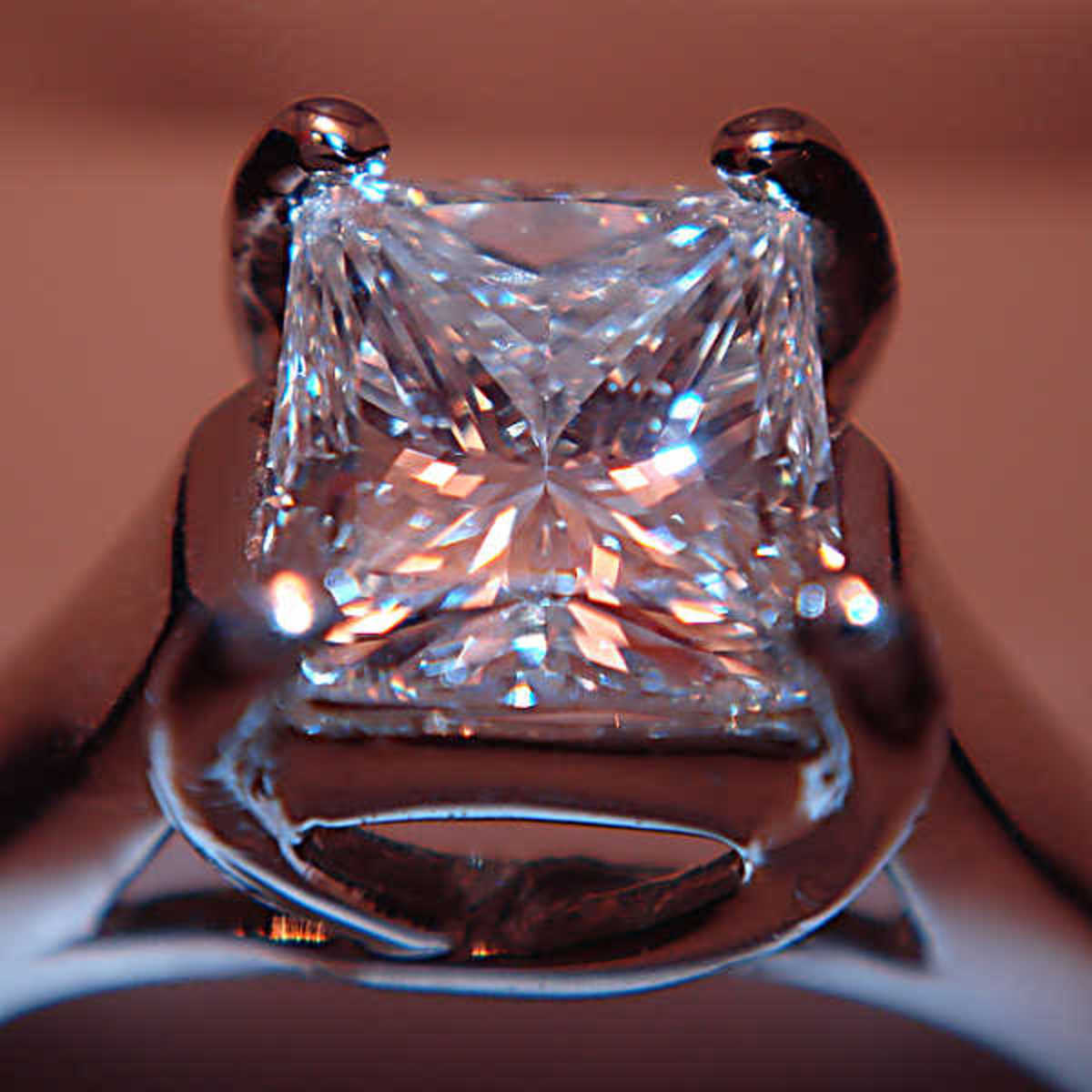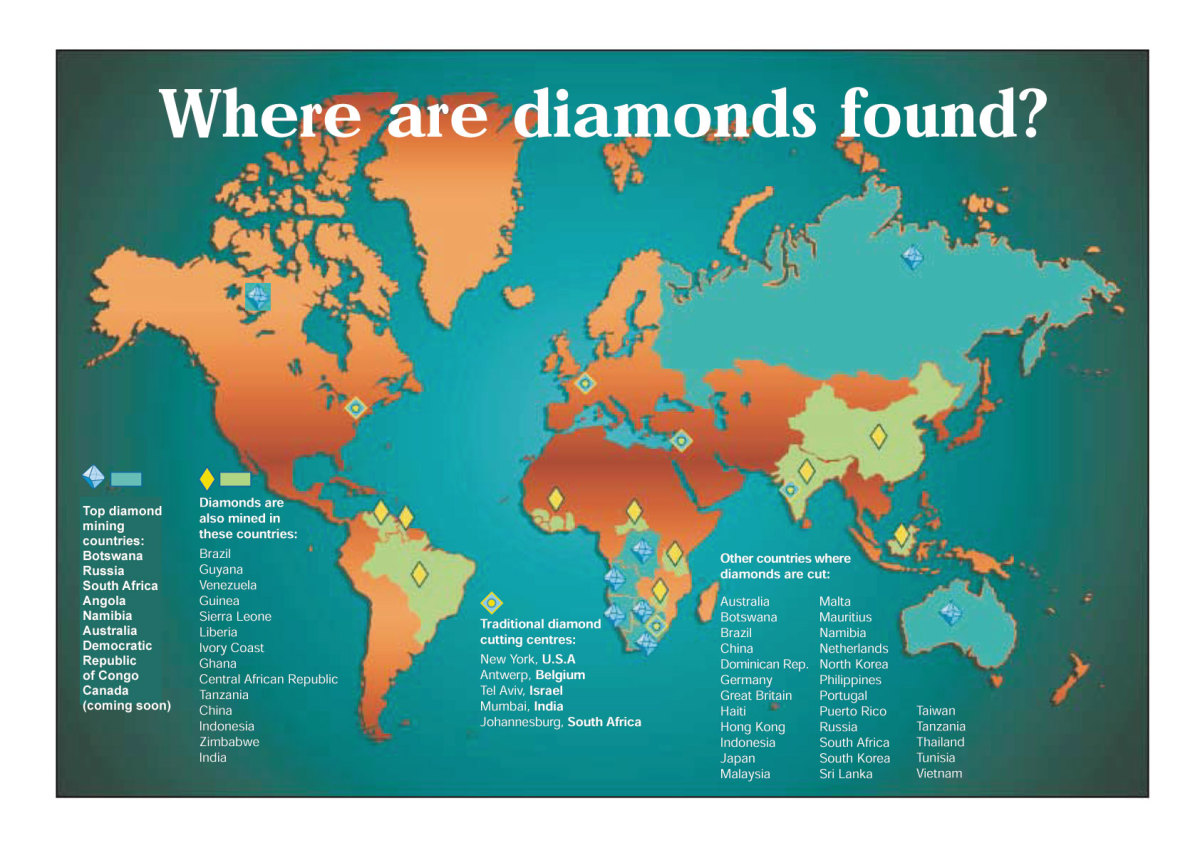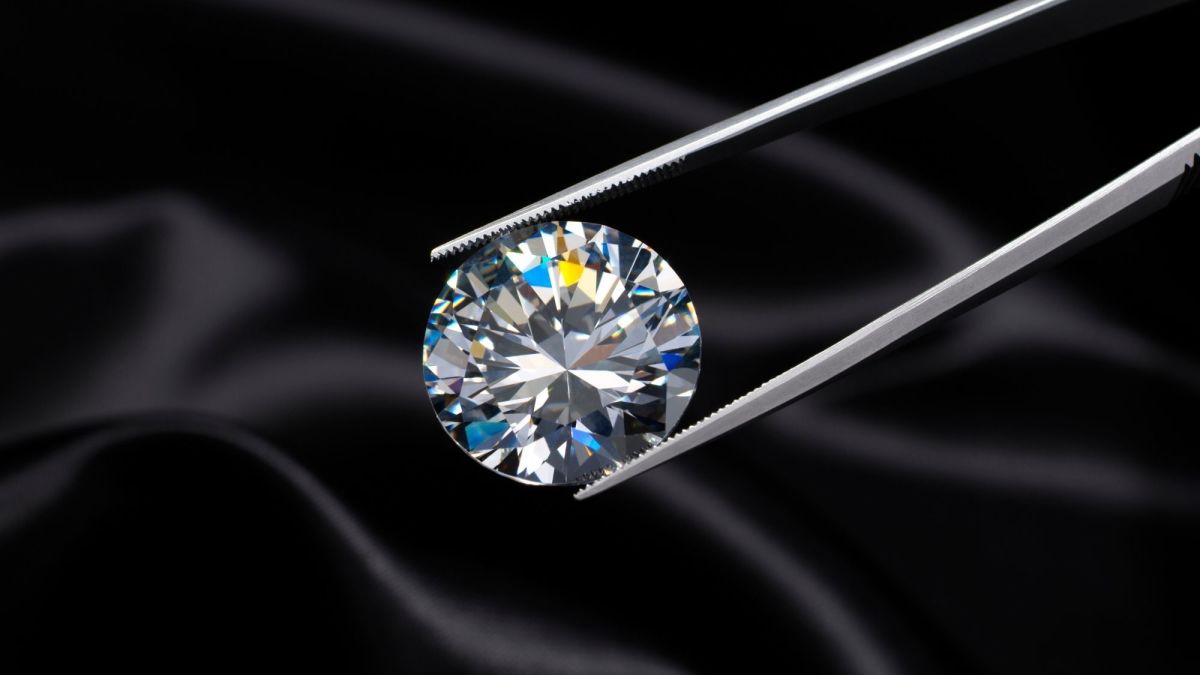The Real Difference Between Simulated (Fake) Vs. Lab Diamonds
Is this diamond real or fake?
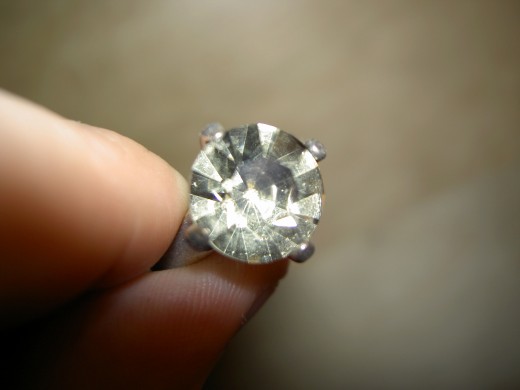
Cultured Diamonds Video
Cultivated Diamond Links
- Diamonds on Demand | Science & Nature | Smithsonian Magazine
Lab-grown gemstones are now practically indistinguishable from mined diamonds. Scientists and engineers see a world of possibilities.
Man Made Diamonds are Real Diamonds
Recently it has become possible to create, in a laboratory diamonds that match the quality of mined diamonds for the purposes of making diamond engagement rings. That's right, man made diamonds are just as beautiful as mined diamonds. When I read about these man made diamonds in the Smithsonian Magazine, I was excited because I did not want to buy a mined diamond for my fiancée. Every time I think of mined diamonds, I think of children being disfigured, but these new lab created diamonds gave me new options. I could buy an ethical, environmentally-friendly man made diamond made right here in the USA.
If you are looking to buy an engagement ring, you might begin your search online. You can even find engagement rings on Amazon these days. Online research is especially fruitful if you are hoping to buy a laboratory made diamond because these diamonds are hard to find in jewelry stores.
There are two companies mentioned in the Smithsonian article that create man made diamonds for jewelry, Apollo Diamonds and Gemesis. When I went to look for jewelry for my girlfriend, I found lots of companies that advertised simulated diamonds. One of them, Diamond Nexus, goes to great lengths to convince you that they create diamonds in a laboratory. Upon further research, however, I found that their product is not actually a diamond. They are high quality fakes.
To call something a diamond, it has to meet special criteria set by the IDC. I found their definitions helpful. The IDC says, a diamond must have a hardness of 10 on the Mohr scale. The easiest way to find out if you are buying a real diamond is to find out the hardness of the gem. Other standards include its specific gravity (+/- 3.52 g/cm3) and its refractive index (2.42).
The IDC defines a simulated diamond or a diamond simulant as product that has the intention of imitating a diamond. The IDC actually does not allow companies to use the word diamond in combination with simulant, though many companies do.
A synthetic diamond is one that is created in a laboratory such as those of Apollo Diamond or Gemesis. These diamonds meet all of the criteria of the IDC to be called a diamond because, whether DeBeers likes it or not, it is a real diamond.
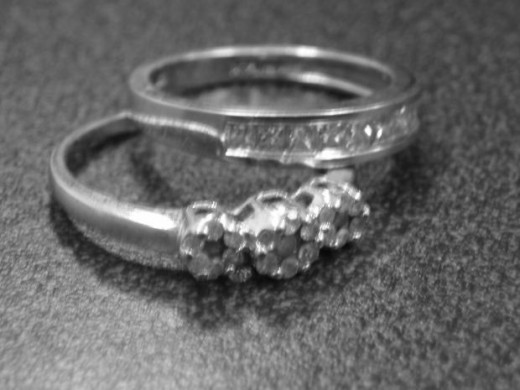
Where can I buy a cultivated or man made diamond?
Only two companies in the US cultivate diamonds for jewelry. They are Apollo Diamond and Gemesis. And, as of this writing Apollo is the only company that produces colorless diamonds like those most often used in engagement rings. Gemsis says that it has colorless diamonds in the pipeline. Apollo diamonds can be purchased from their website. Gemesis has retailers throughout the US.
Gemesis currently (in 2011) has a new website up that says a new Gemesis is coming and offers information on buying colorless cultivated diamonds. What does this mean? Who knows. They have been claiming for years that colorless lab diamonds would be available soon. They will prove a real winner in their competition with Apollo if they can offer a lab diamond that is larger than .60 carats. So far, Apollo is still on the small side.
How Much Do Laboratory Diamonds Cost?
Diamonds created in a laboratory are have the highest quality. They can be near colorless and near flawless, and their prices reflect this high quality. However, the synthetic diamonds I purchased were appraised by a GIA certified jeweler at nearly twice what I paid for them. If you are interested in the latest prices of Gemesis diamonds, they actually sell on Amazon, so you can check out the latest prices there. They offer a full range or prices to fit many different budgets. To be sure you can find lower quality diamonds for less, but the pedigree or source of the diamond would be in question. Was that diamond previously on someone else's finger? Did it come out of a mine with questionable ethics? With a laboratory diamond, what you pay for is exactly what you get with no baggage.
Valuable Property Insurance for Your Engagement Ring
After I purchased my lab created diamond, I had it set and finally appraised. That appraisal allowed me to insure the engagement ring through a valuable property insurance policy. The policy I purchased gives me thousands of dollars of protection for a few dollars a month. It covers everything from theft to loss to damage. The only thing it doesn't cover is if my fiancée throws it away intentionally. Then, I guess it's my fault.
So is the valuable property insurance worth the cost? Depending on the cost of you policy and whether or not you pay a deductible the cost may not be worth it. In this case, the cost is few dollars a month and has no deductible. If anything happens to the ring in the next 50 years it is still worth the money. If, however, I had to pay a deductible of $500 or $1000 it would take a big bite out of the benefit of having the valuable property insurance on the engagement ring.
Imagine a purchase price of $3000. If your policy cost $5 a month, it would take 50 years to equal that $50. Now, this isn't a perfect calculation because inflation and investment opportunity costs are not calculated, but then, neither is the peace of mind that comes with wearing the engagement ring without fear that it might be lost.

A Brief History of Conflict Diamonds
Many people are interested in synthetic diamonds as an alternative to conflict diamonds. Conflict, or blood diamonds, are diamonds mined in countries that were or are experiencing a war. Sierra Leone and Angola were infamous producers of conflict diamonds in the 90s and many of those diamonds are still on the market. There, non-government troops amputated limbs, enslaved children, and terrorized local populations to control diamond mines. The diamonds were mined sometimes literally at gun-point. The diamonds were then traded for more weapons that then prolonged the conflicts. Many companies deny that they sell conflict diamonds, but many diamonds are smuggled out and then appear to come from conflict free zones. The only way to avoid conflict diamonds is to avoid the diamond trade completely via a synthetic or simulated diamond.
Update on Apollo Diamond
Apollo Diamond was recently sold to SCIO Diamond Technologies of Greenville, SC. So far this company has not sold any diamonds but promises to do so in the future. It is expected that they own rights to all technology developed by Apollo, so the above statements about their products apply to SCIO.
As of November of 2015 SCIO was partnering with Renaissance Jewelry to make lab-created diamonds available to consumers as jewelry. Alternatively, they sell raw diamonds that any jeweler could cut and polish for you to put in a finished piece.



